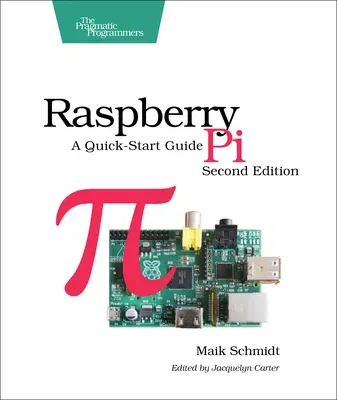Printed in full color.
Most of the book is targeted at beginners in computing and
programming. A few parts, such as the small electronics project and
setting up a web server, assume some intermediate skills.
The Raspberry Pi is one of the most successful open source hardware
projects ever. For less than $40, you get a full-blown PC, a multimedia
center, and a web server--and this book gives you everything you need to
get started. You'll learn the basics, progress to controlling the Pi,
and then build your own electronics projects. This new edition is
revised and updated with two new chapters on adding digital and analog
sensors, and creating videos and a burglar alarm with the Pi camera.
Get your Raspberry Pi up and running and doing cool stuff. You'll start
with the basics: adding hardware, installing and configuring Debian
Linux, and customizing the Pi's firmware to get the most out of your
hardware.
Then the fun begins. You'll connect the Pi to your home network, surf
the web, and tweet messages. You'll learn how to get the most out of
Midori, the Pi's standard browser, and control the desktops of other PCs
with the Pi. Then you'll explore the Pi's versatility with a series of
home projects. Turn it into a web server in your home network; convert
the Pi into a powerful multimedia center so you can watch
high-definition video and listen to your favorite music; and play
classic video games.
Then you'll use the GPIO pins on the Raspberry Pi to build your own
electronics projects, such as an "out of memory" alarm. You'll learn how
to use digital and analog sensors with the Pi, even though the Pi
doesn't have analog input ports! Finally, you'll set up the Pi camera,
create your own time-lapse videos, and build an automatic e-mailing
burglar alarm. Power to the Pi!
What You Need
You need a Raspberry Pi and several things that you probably already
have at home, such as a keyboard, a mouse, a monitor/TV set, and an SD
card. To build the electronic projects you need a few cheap parts and
the Pi camera.

